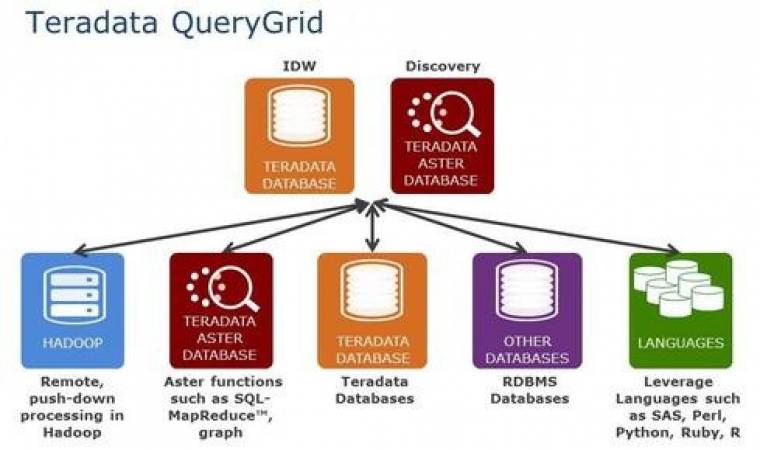Teradata QueryGrid software orchestrates the use of multiple analytic engines and file systems, freeing the user to concentrate on their business analysis. Unique in its design, Teradata QueryGrid enables bi-directional data movement and pushdown processing on data where it resides, while minimizing overall data movement and duplication.
As organizations successfully build out their analytical ecosystems, they realize the need to leverage more data. Additional sources of data enable users to ask new questions. However, to be productive users need technology that frees them from spending time moving data from system-to-system, or knowing the mechanics of data movement.
“Teradata QueryGrid allows organizations to focus on getting answers to their business questions, not on moving data or splitting analyses into discrete processes,” said Scott Gnau, president, Teradata Labs. “Teradata QueryGrid can instantly reach into Oracle databases with bi-directional data movement or pushdown processing.”

Teradata QueryGrid, available with Teradata Database 15, supports The Teradata Unified Data Architecture. The Teradata Unified Data Architecture helps customers to design architect, implement, and orchestrate multiple best-of-breed engines, tools, and emerging technologies into a cohesive analytical ecosystem. It connects the Teradata Database, Teradata Aster Discovery Platform, Hadoop technology and now Oracle databases to deliver a robust analytical ecosystem.
The Teradata QueryGrid software connection to Oracle databases is now available.
